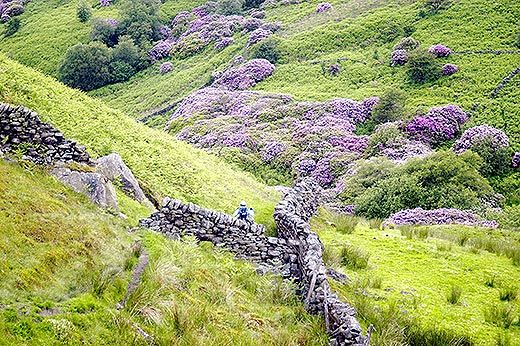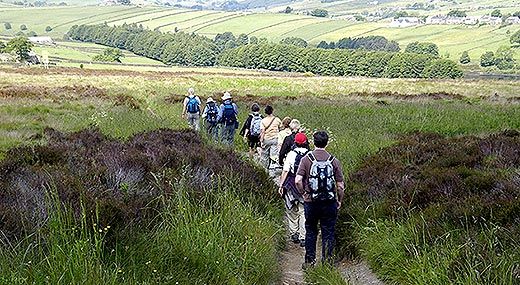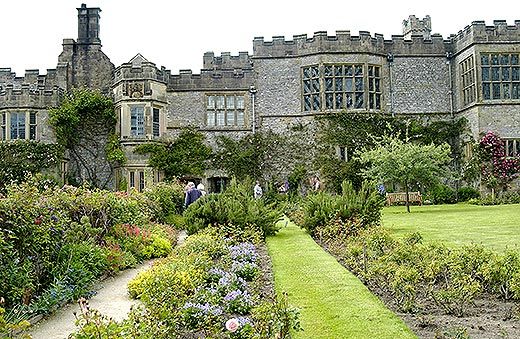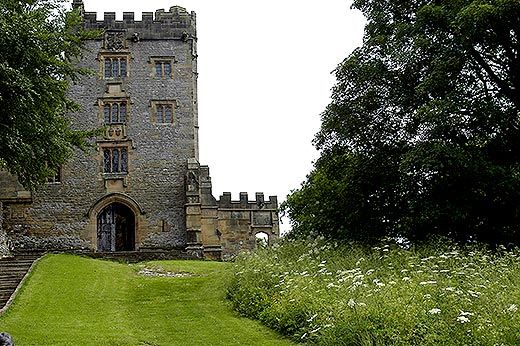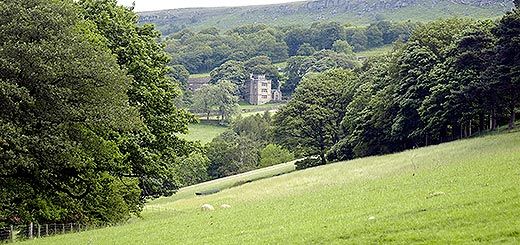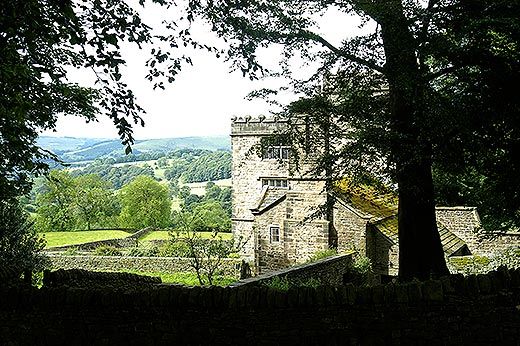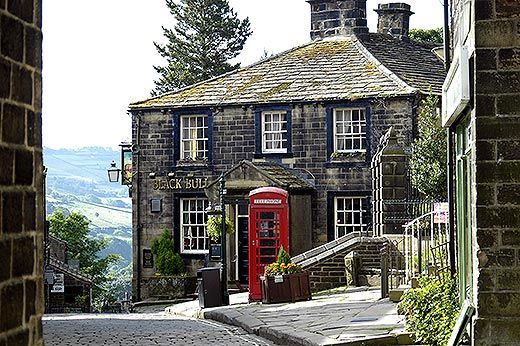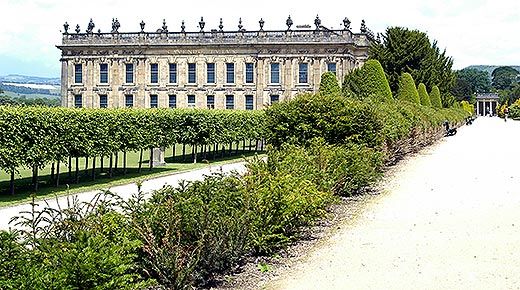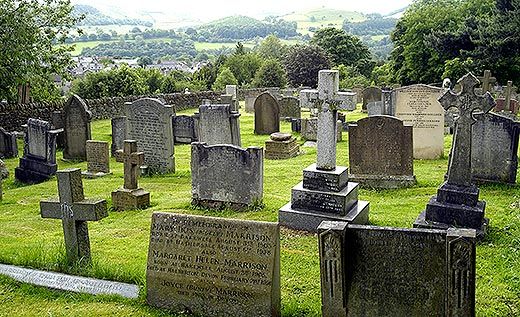The Full Brontë
The British countryside is home to the real sites behind Jane Eyre, Wuthering Heights and other works by the literary sisters
/https://tf-cmsv2-smithsonianmag-media.s3.amazonaws.com/filer/Bronte-Way-631.jpg)
The storm had been assembling itself all morning, and finally the glowering sky, veined with lightning, loosed a rain of Old Testament proportions. Alan Pinkney looked up approvingly, then turned to the seven walkers he was leading and exclaimed, “This is perfect—I can almost see Heathcliff riding across the moor!”
We had ignored the clouds to hike some three miles to a remote, ruined farmhouse named Top Withins. It was little more than crumbling walls, but in its original form it is widely believed to have been the model for Wuthering Heights, home of the wild and mysterious Mr. Heathcliff in Emily Brontë’s classic 1847 novel of passion, rage and revenge.
This was the first of five days that we followed in the footsteps of Britain’s most famous literary family, the Brontë sisters–Emily, Charlotte and Anne–the authors of Wuthering Heights, Jane Eyre and other, lesser-known masterpieces. Like the sisters a century and a half earlier, we took long walks across the bleak Yorkshire moors and through the stupendous sweep of scenery in Derbyshire’s Peak District, all the while touching the landscapes and buildings that animated their work.
“A Brontë tour is unparalleled in its richness because you have the unique situation of three literary geniuses spending most of their creative lives in the same place,” says Pinkney, who spent three weeks putting together the walk along the “Brontë Trail” for the Wayfarers, a 25-year-old British company specializing in small-group walking tours. “And the only way to do it right is on foot.”
Indeed, it can be argued that much of 18th- and 19th-century English literature was born afoot. Not only the Brontës, but Charles Dickens, Thomas Hardy, Samuel Coleridge, William Wordsworth, John Keats, Sir Walter Scott, Jane Austen and Thomas Carlyle were all members in good standing of the walkers club. (In fact, previous Wayfarers walks have focused on Hardy, Wordsworth and Scott, and there are plans for an Austen walk.)
Ground zero for a Brontë pilgrimage is Haworth, a former wool-manufacturing town whose cobblestone streets climb steeply to a square and St. Michael’s Parish church, where the sisters’ father, Patrick Brontë, was curate and where the family vault lies beneath an inscribed stone. The church has been rebuilt since the Brontës’ day, but a few steps away is the parsonage, a stone Georgian structure that remains much as it was when it was built in 1778. The sisters spent nearly all of their lives there, and it is now operated as a museum by the Brontë Society.
The museum is furnished with an array of Brontë artifacts, including Charlotte's wedding bonnet, Anne's writing desk and the black sofa where Emily died. Just to the left of the entrance door is the dining room, where the sisters penned their novels by candlelight. “With the amount of creativity going on here back then, it’s a miracle the roof didn’t blow off,” says Ann Dinsdale, museum collections manager, who gave several talks to our group.
Leaving the parsonage, we walked single file past the graveyard and its tombstones canted by the frosts of hundreds of Yorkshire winters. The inscriptions identify dozens of children and young adults. Haworth was a grim place during the Brontës’ time, as disease reduced life expectancy to 25 years. (All three sisters died in their 30s, Emily and Anne of tuberculosis in 1848 and 1849, respectively, and Charlotte of tuberculosis and complications from pregnancy in 1855.)
Soon we were on the moors. While the parsonage was the Brontës’ creative sanctuary, it was the wild and desolate moors that fired their imaginative and descriptive powers. Early in Wuthering Heights, Emily wrote: “[O]ne may guess the power of the north wind...by the excessive slant of a few stunted firs... and by a range of gaunt thorns all stretching their limbs one way, as if craving alms from the sun.”
We were on our way to a tiny waterfall that was a favorite destination of the sisters. We walked along the same ancient right of way, past green hillsides speckled with white sheep and demarcated by stone walls thick with history. After the falls, it was another mile to Top Withins, where the lightning unzipped the sky and the rain came down in sheets.
Then we were on England’s famous Pennine Way, a 267-mile national trail that runs from Derbyshire north to the Scottish border. As we approached the village of Stanbury, the sun came out, the countryside glistened and a rainbow smiled over the scene. Each day we walked eight to ten miles, pausing to chat with the characters of the English countryside and inhaling the lusty odors of earth amid sounds bovine, equine, porcine and ovine.
Just outside Stanbury we paused at Ponden Hall, a privately owned 17th-century farmhouse that Emily is said to have portrayed as “Thrushcross Grange,” home of the Linton family in Wuthering Heights. At the end of the second day, we sat inside the huge fireplace at Wycoller Hall, which in Charlotte’s Jane Eyre became “Ferndean Manor,” where Jane and Rochester lived at the novel’s end.
By midweek we had shifted from Yorkshire to Derbyshire and the village of Hathersage, which Charlotte portrayed in Jane Eyre as “Morton,” a hamlet set “amongst romantic hills.” The vicarage where she stayed has not changed substantially in 164 years; we heard the same church bells she used in her novel to signal major changes in Jane’s life.
The Peak District landscape seems much as Charlotte’s heroine describes it—“the hills, sweet with scent of heath and rush... soft turf, mossy fine and emerald green.” After four miles we came to North Lees Estate, a castle-like building once owned by the real-life Eyre family and now the property of the national park authority. North Lees emerged as “Thornfield Hall,” home of Jane Eyre’s enigmatic Mr. Rochester.
Pinkney called us to a halt, reverentially opened a dog-eared copy of the novel and began reading: “I looked up and surveyed the front of the mansion. It was three storeys high, of proportions not vast, though considerable: a gentleman's manor-house, not a nobleman's seat: battlements round the top gave it a picturesque look.”
The battlements were the stage for one of the most dramatic scenes in English literature—the insane Mrs. Rochester leaping to her death from the fire she had started. Not even the arrival of a red van carrying a utility employee to read the estate’s electric meter could break the mood.
We left the green fields and woodlands of the Hope Valley and made a lung-bursting ascent of some 1,500 feet to the crest of Stanage Edge, a rim of fissured gray rock. As we crossed a 2,000-year-old Roman road, we had to hold on to boulders to avoid being blown down by the gale.
At Moorseats Hall–our final stop on our final day—a fenced-in bull shot us an out-for-blood glare. Charlotte made this “Moor House,” where the starving and penniless Jane was taken in by the Rev. St. John Rivers. Pinkney stood in front of a stone wall and read again: “I put out my hand to feel the dark mass before me: I discriminated the rough stones of a low wall—above it, something like palisades, and within, a high and prickly hedge. I groped on.” We were rapt with attention as he continued reading—“Again a whitish object gleamed before me; it was a gate”—and reached out to touch the wall, bringing the moment back through the decades and generations and reminding us why we had taken to calling our trek “the full Brontë.”
